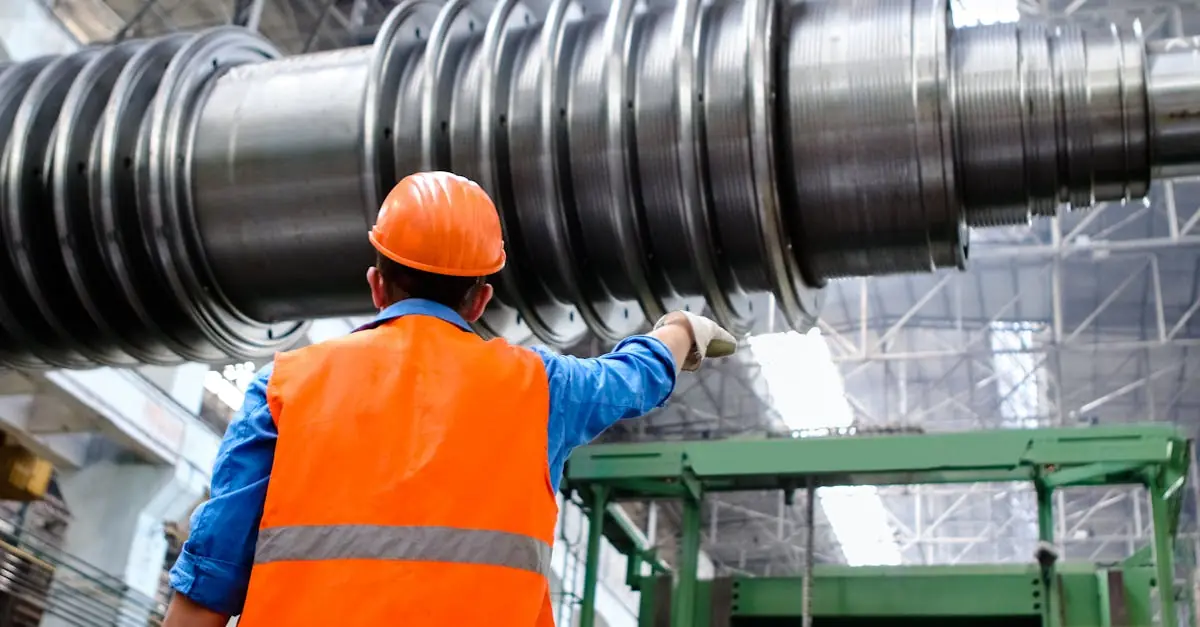In the fast-paced world of manufacturing, keeping machinery running smoothly is like trying to keep a toddler from throwing a tantrum—it’s a challenge that requires constant attention. Enter the manufacturing maintenance checklist, the unsung hero of the factory floor. This handy tool not only helps prevent costly downtimes but also ensures that equipment operates at peak performance.
Table of Contents
ToggleImportance Of A Manufacturing Maintenance Checklist
A manufacturing maintenance checklist plays a crucial role in the efficiency of production operations. This tool enables maintenance teams to track equipment performance and ensure reliability. Regular use of the checklist prevents unexpected equipment failures, which can lead to costly downtimes.
Effectiveness of machinery increases when operators adhere to a structured maintenance plan. A comprehensive checklist outlines essential tasks, such as inspecting critical components and verifying safety protocols. Predictive maintenance relies on these systematic checks, allowing teams to identify issues before they escalate.
Safety remains a priority in manufacturing environments. A well-crafted checklist establishes standard operating procedures that enhance workplace safety. Compliance with safety regulations reduces the risk of accidents, protecting both employees and equipment.
Documentation benefits from the use of a maintenance checklist. Keeping records of completed maintenance activities provides insights into equipment performance trends. These records serve as valuable references during audits or inspections.
Investment in a manufacturing maintenance checklist yields long-term savings. By planning maintenance activities intelligently, companies minimize repair costs and extend the lifespan of machinery. Efficient use of resources leads to improved overall productivity and profitability.
Implementing a manufacturing maintenance checklist fosters a proactive maintenance culture. Employees develop a sense of ownership regarding equipment and maintenance tasks. Engaging the entire team in maintenance efforts cultivates accountability and promotes continuous improvement.
Key Components Of A Manufacturing Maintenance Checklist
A comprehensive manufacturing maintenance checklist includes various tasks that ensure machinery operates efficiently and safely. Emphasizing different intervals of maintenance keeps equipment in optimal condition.
Daily Maintenance Tasks
Daily tasks focus on routine inspections to detect issues early. Technicians check fluid levels, examine belts and hoses for wear, and clean surfaces to prevent debris buildup. Safety equipment such as guards and emergency stops receive attention to ensure functionality. Monitoring temperatures and vibrations of machinery helps identify potential problems. Addressing these tasks promptly significantly reduces the risk of equipment failure.
Weekly Maintenance Tasks
Weekly maintenance involves a deeper inspection of equipment and systems. Routine checks on alignments and lubrications are essential to maintain operational efficiency. Staff tests electrical connections to ensure secure and safe operation. Also, they inspect filters and vents to prevent overheating and contamination. Comprehensive documentation during these inspections aids in identifying patterns, fostering timely interventions.
Monthly Maintenance Tasks
Monthly maintenance tasks encompass thorough evaluations of machinery and components. This includes cleaning and calibrating sensors to enhance precision. Technicians inspect major assemblies and perform detailed performance analyses. Identifying and replacing worn or damaged parts ensures optimal performance. Following these protocols boosts longevity and productivity while significantly reducing unexpected failures.
Benefits Of Implementing A Manufacturing Maintenance Checklist
Implementing a manufacturing maintenance checklist offers significant advantages in operational efficiency and safety.
Improved Equipment Longevity
A regularly used maintenance checklist significantly extends equipment life. Performing routine checks on critical components identifies issues early, allowing for timely interventions. Maintenance tasks such as lubrication, calibration, and parts replacements prevent wear and tear. This proactive approach reduces the risk of equipment failure, leading to enhanced reliability. Documenting each task provides insights into equipment performance, letting operators track trends over time. An effective checklist not only keeps machinery running smoothly but also minimizes replacement costs, ultimately contributing to a more sustainable manufacturing operation.
Enhanced Safety Standards
Safety stands out as a primary benefit of a manufacturing maintenance checklist. Establishing clear procedures reduces accident risks and ensures compliance with safety regulations. Regular inspections of safety equipment and emergency procedures foster a safer working environment for employees. Essential tasks like checking emergency stops and verifying protective gear functionality enhance operational safety. A comprehensive checklist encourages employees to take ownership of safety standards, promoting a culture of vigilance and accountability. Through structured oversight, manufacturers not only protect their workforce but also mitigate potential liabilities associated with workplace accidents.
Common Challenges In Creating A Manufacturing Maintenance Checklist
Creating a manufacturing maintenance checklist presents various challenges that can hinder optimal performance. Two significant areas include resource allocation and task prioritization.
Resource Allocation
Proper resource allocation remains a cornerstone when developing an effective checklist. Many manufacturers struggle with tight budgets and limited personnel, which can impact routine maintenance significantly. Team members often juggle multiple responsibilities, leading to incomplete task execution. When resources are underfunded, equipment may not receive timely inspections and repairs. It’s crucial to identify the necessary skills and tools required for maintenance tasks. Seeking input from maintenance staff can help address these resource constraints effectively. Investing in training and equipment can lead to a more robust maintenance plan, minimizing downtime and enhancing overall productivity.
Task Prioritization
Task prioritization plays a vital role in maintaining equipment efficiency. Manufacturers frequently overlook the importance of establishing a clear hierarchy of maintenance tasks, resulting in neglected critical inspections. Knowing which tasks impact operational flow the most allows teams to allocate time and resources more effectively. Evaluating machinery condition helps determine high-priority tasks, such as those addressing safety equipment functionality and preventive maintenance on high-use machinery. Addressing urgent tasks first often reduces unexpected failures and improves machine reliability. Maintaining an evolving checklist that adapts to changing equipment conditions ensures that operators understand and focus on the most pressing issues.
Conclusion
A manufacturing maintenance checklist is a vital tool for ensuring operational efficiency and safety. By implementing a structured approach to maintenance tasks, manufacturers can significantly reduce downtime and enhance equipment reliability. This proactive strategy not only extends the lifespan of machinery but also fosters a culture of accountability among employees.
With regular inspections and thorough documentation, organizations can stay ahead of potential issues and maintain compliance with safety standards. By prioritizing maintenance and adapting checklists to evolving equipment needs, manufacturers position themselves for long-term success. Ultimately, investing in a comprehensive maintenance checklist leads to improved productivity and profitability in the competitive manufacturing landscape.








